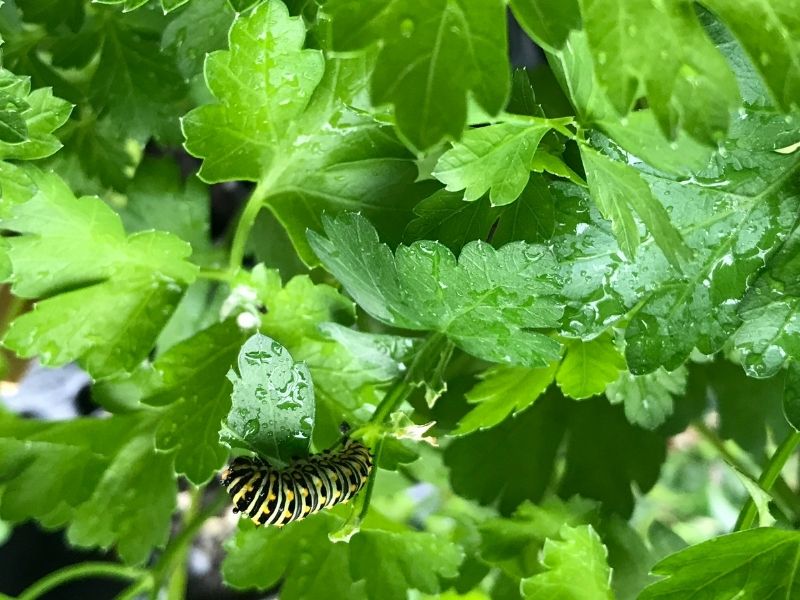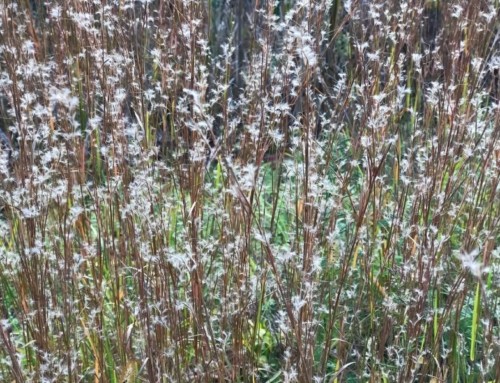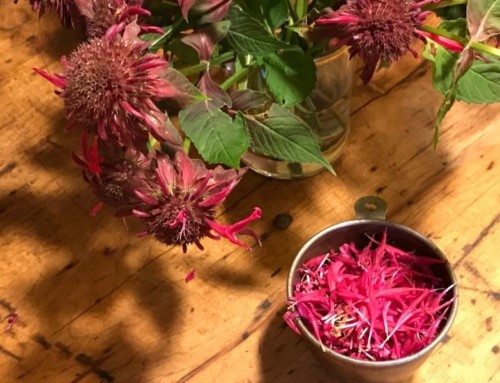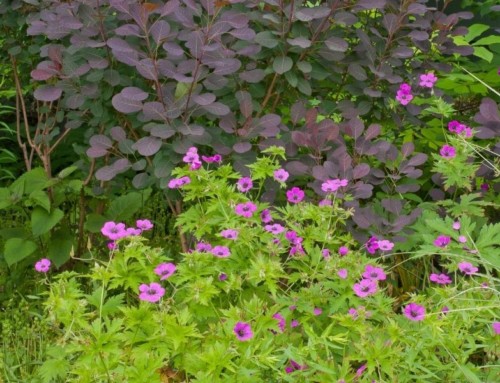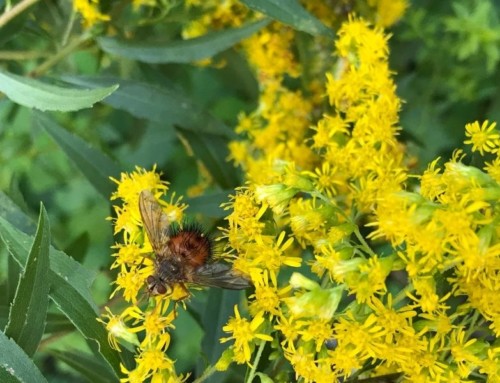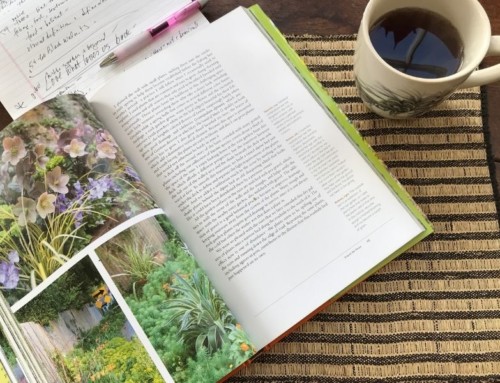Ah, August. That bounteous time of year again.
Time to think ahead to darker days.
These days I tread a thin path through the dining room, so I don’t catch my hair in huge hanks of anise hyssop, mint and lemon verbena hanging from the rafters to dry.
Because it’s been so humid, I clip the branches into smaller bits to finish drying on racks in the oven, so they don’t get moldy in storage jars.
Nasturtiums tumble over the walk and I’m tripping on thyme again.
Time to make herb vinegar and salt, to whip up batches of herb butter and pesto to squirrel away in the freezer.
I love having herbs growing outside my back door, in pots, between pavers and throughout the gardens. What a luxury to go out and snip a bit of fresh herbs for a salad, for breakfast eggs or anything I cook for dinner.
Salting away herbs (literally and figuratively) is one thing, but oh, for the taste and fragrance of fresh homegrown herbs in winter…
A new book by my friend, noted herbalist, writer and educator, Susan Betz comes at just the right time. Herbal Houseplants has inspired me to think beyond the humongous rosemary I wrestle back into the sunny basement every fall.
When I’ve got three pots astir on the stove at once, I don’t always take the time to go down to the basement for a sprig of rosemary.
But I do have a sunny greenhouse window right over the kitchen sink, one step from the stove.
This year, with Susan Betz’s good advice, I’m going to try growing herbs indoors.
August is a good time to start preparing to move some outdoor herbs inside (after acclimating them to less light, washing off bugs and dirt and inspecting closely).
There’s plenty of mint to dig and chives that would be oh-so-good in salads.
Parts of my lemon-themed container – lemon thyme, lemon verbena, lemon grass and ‘Lemon Gem’ signet marigolds – might make the transition.
(Lemon verbena drops its leaves and gets wicked whiteflies indoors. It will spend the winter infused in gin)
As she points out, “In a natural sense, there is no such thing as a “house plant,” for no plant can claim a house as its natural habitat. A plant growing in a container depends on the gardener for its every need.”
Simple, clear (and clear-eyed) instructions for care, and appealing but realistic photos (i.e. no lifestyle porn perfection) testify to the author’s long experience with trial and error.
Each suitable plant comes with a concise description of its needs and habits, life cycle and best varieties, common names, its meaning in traditional floral language, how to propagate, parts used, harvesting, preserving and pests.
She quotes from The Garden That I Love by English writer and poet’s 1906 book to set the tone:
“There is no gardening without humility, an assiduous willingness to learn, and a cheerful readiness to confess you were mistaken. Nature is continually sending even its oldest scholars to the bottom of the class for some egregious blunder. But by the due exercise of patience and diligence they may work their way to the top again.”
Thus prepared to be humble, I am cheerfully starting at the beginning, Caring for Your Herbs. Here are some of the high points.
Light
“Light is nourishment and energy to a plant.”
That means at least 5 to six hours of sunlight per day – or else artificial full-spectrum lights for 12-14 hours per day (plants need rest and darkness too).
Temperature and Humidity
Temperature: 50-70 degrees is good, but hot dry air inside homes dries plants out. Keep away from heating (and air conditioning) vents, set on a water-filled tray of pebbles, group plants and mist them a couple times a week.
Potting and Soil Mixtures
Good drainage is essential and neutral pH. Betz recommends organic soil-based potting mixes and includes the classic recipe and instructions for repotting as soil breaks down over time – and plants grow.
- 3 parts soil-based potting mix
- 1 part coarse sand
- 1 part compost
- 1 part perlite
Choosing Containers
“Aesthetics are important, but practicality is even more so.” Because most herbs like dry feet, clay pots are preferred because they allow soil to breathe and “moisture evaporation through the porous sides of clay containers is a simple way to raise humidity and moisture in the air surrounding the plant.”
Watering
“Learn to read the plant and it will tell you if it’s thirsty.” Although herbs are forgiving, soggy soil will do them in. “Improper watering is the number one killer.”
Betz advises to water (gently) until it runs out the drainage hole, then empty any water in the bottom saucer after an hour has passed.
Fertilizing
Half-strength solution of organic 15-15-15 liquid fertilizer, or fish emulsion every 2-3 weeks (to benefit naturally occurring beneficial soil bacteria and micro-nutrients), during the active growing season.
This is a Book Packed with “Thymely Tips and Sage Advice”
- Insect pests are always a concern. Aphids and spider mites can be controlled by spraying a hydrogen peroxide solution. Occasionally watering plants with this solution will increase oxygen levels and soil aeration. Just mix 2 tablespoons of 3% hydrogen peroxide in 2 cups of water.
- Misting frequently with water helps with humidity and cleans dust off the leaves. But occasionally spraying sparkling water will stimulate growth and promote deep green foliage.
- Turn windowsill plants regularly for even healthy growth on all sides
- Stir the soil surface once in a while with a fork. That will aerate the soil and help water penetrate better.
- Divide and pot up mint and chives from the garden, but let them freeze outdoors before bringing them inside. The rest period will promote fresh new growth.
- Start annual herbs like basil and cilantro from seeds outdoors at the end of summer – the ones growing in the garden are at the end of their life cycle.
“Understanding the lifecycle of a plant will help you plan for its future, accept when it’s kaput, and let it depart in peace. It’s also wise to learn to recognize when it’s time to trash a pest-ridden or sick plant to stop further spread.”
Sage advice indeed.
